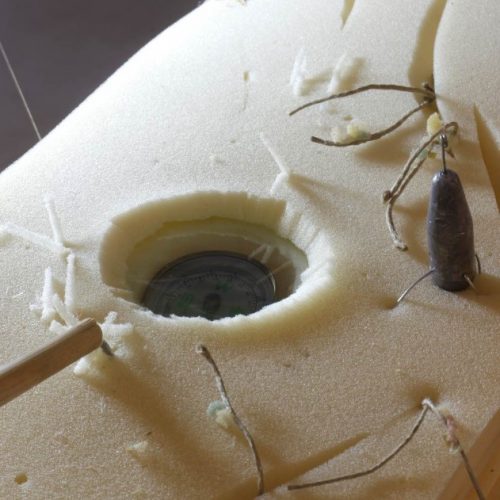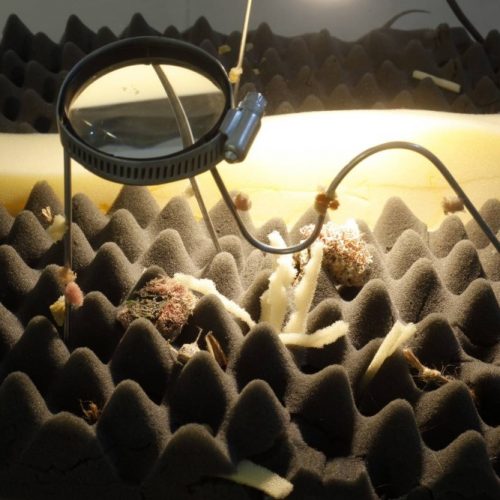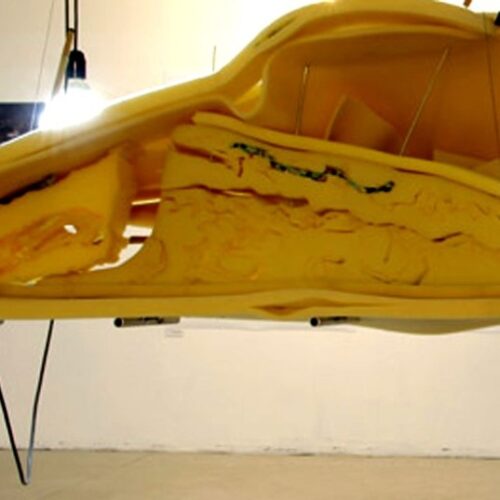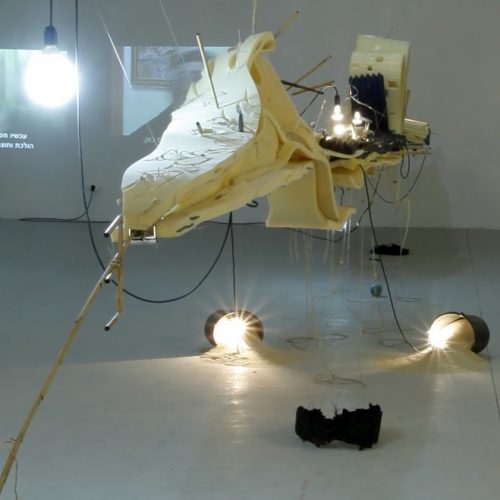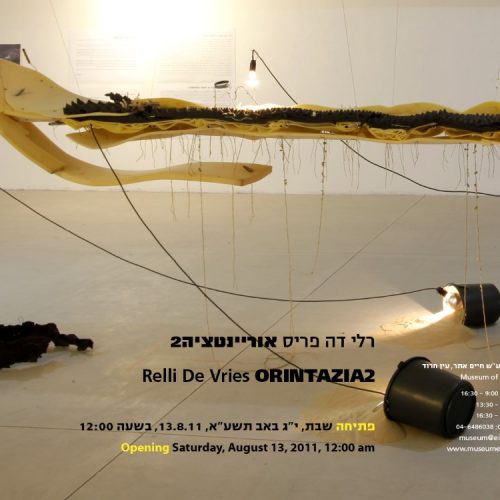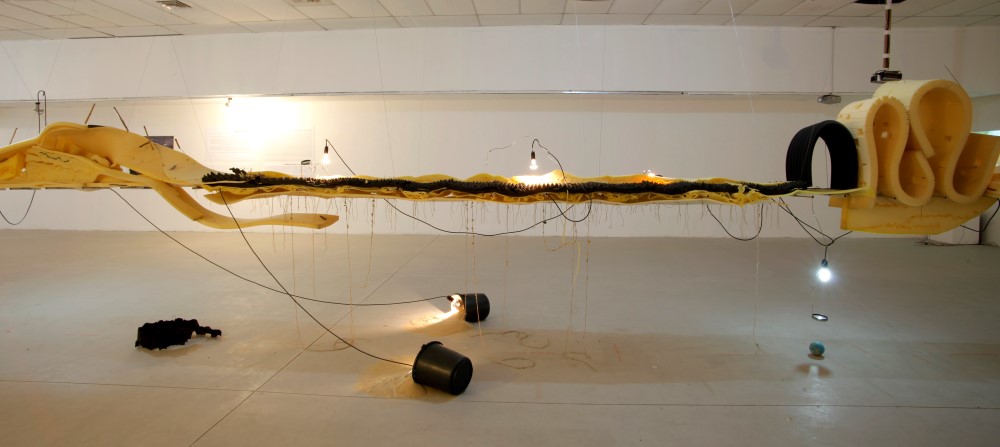
East of the Mediterranean — Latitude 32
The longitude of the network runs in the body of the state as a skeletal thread. The coastal line of the Mediterranean paralleling it overlaps mostly the western border. This is a long and narrow country and so are its landscape templates. That way the country is compressed with latitude of ‘shrunken-waists’ and tectonic elevations of mountains with alluvial plains in between. The longitudinal orientation is north-south. The exterior (in the west) is the sea, and the interior (in the east) is the enemy. The latitude and its geological cross-section in particular, is a line ‘against’. It is contrary to the physical and experiential-conceptual structure of the space. As such it allows to examine the space differently, and to locate along it – in geopolitical widthwise reading points of the country – the link between geology, life in it and above it. At the Ein Harod Museaum is exhibited the first segment of that glance-cross-section. The origin of the cross-section in the Mediterranean in the west, and it turns eastward to the orient east) and inside into the land. It travels through the Arab village of Jisr-az-Zarka, through the quarried tunnel in the cliffs of the Roman calcareous sand stone quarry, on which the village was built. The calcareous sand stones were used by the Romans to build the aqueduct in which the latitudinal cross-section passes; and it stretches eastward into the heart of the Kabara plain which was entirely flooded with swamps and from which the original inhabitants of the village were evacuated, in order to dry these swamps. From here the line continues and meets the nose of the Carmel Mount at its edge. Right at the elevation point the Binyamina quarry was opened wide, and the geology can be seen from this physical removal. Further on this latitude leads me also to El-Salem, to Umm el Fahem, to the settlements on the west bank, to the Gilboa Mountains, to Beit Shean and to Jordan. In this latitudinal cross-section I examine the reality of the people present, the events in the lives, the continuities between geological strata and their human history. Ein Harod houses “Orientatzia2” which is the first segment of the glance-cross-section. Ein Harod itself is present in the northern edge of the latitude, and as such it can glance both at and inside it. In its location under sea-level the point of view allows examination of its entire width. Through it a reading is suggested of suppressed geo-political events that keep returning and bursting forth, similar to the water of the swamp that was never fully dried up. “Orientatzia2” offers a different thinking on a place at the core of the country’s heart, hidden and enigmatic.
Relli de Vries
ORIENTAZIA 2
Curator: Galia Bar Or
August 2011-January 2012


